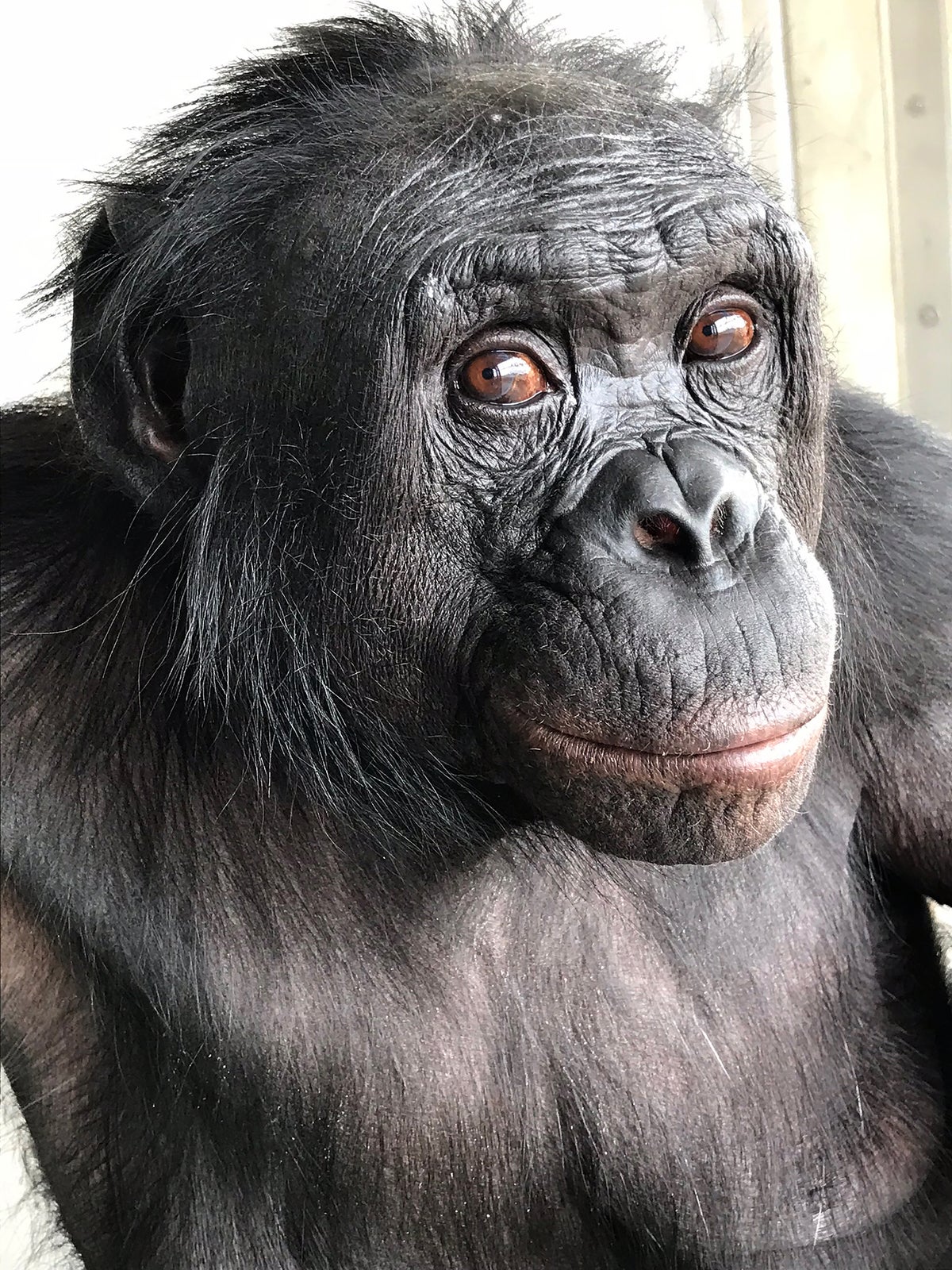Kanzi the Bonobo, Who Learned Language and Made Stone Tools, Dies at Age 44
What we learned about ape and human cognition from Kanzi the bonobo, who died this week
Kanzi the bonobo died on March 18, 2025, at the age of 44.
Kanzi the bonobo, who learned how to communicate with humans using symbols, has died at the age of 44. Raised and kept in captivity, Kanzi was the subject of many studies aimed at illuminating ape cognition and the origins of human language and tool use.
Kanzi was not the first great ape to learn how to communicate with humans using symbols. Koko the gorilla and Washoe the chimpanzee learned signs that were adapted from American Sign Language. But unlike his predecessors, who acquired their skills through direct training from researchers, Kanzi developed an interest in such symbols on his own when his adoptive mother, Matata, was receiving lessons on how to use keyboard lexigrams to communicate. Kanzi went on to learn hundreds of symbols that represented various objects and activities, as well as some more abstract concepts. Sometimes he combined these symbols to create new meaning.
If you’re enjoying this article, consider supporting our award-winning journalism by subscribing. By purchasing a subscription you are helping to ensure the future of impactful stories about the discoveries and ideas shaping our world today.
Kanzi the bonobo learned hundreds of symbols to represent objects, activities and abstract concepts over his lifetime.
Kanzi’s toolmaking skills fell short of those of modern-day humans and our ancestors, however. When Toth and Schick compared Kanzi and Panbanisha’s handiwork with their own and that of human ancestors who lived 2.6 million years ago, they found that the bonobos had many more failed attempts at removing flakes from the cores—and that the flakes the bonobos did produce were smaller than the ones made by humans. “We feel that their limitations in flaking were both biomechanical and cognitive,” Toth says. “You have to recognize acute angles on core edges and strike in the right place and at the right angle with your stone hammer to successfully remove flakes.”
One of Pruetz’s favorite pieces of Kanzi lore, she added, was a story about him using two of his symbols to describe a frightening beaver he discovered in his new outdoor habitat in Iowa. “He combined the symbols for ‘water’ and ‘gorilla,’ the latter referred to something scary in his world, and I always think of beavers … as water gorillas now,” she wrote.
Kanzi was born in 1980 at what is now the Emory National Primate Research Center Field Station. He and Panbanisha were moved to the Language Research Center at Georgia State University in 1985. From there the siblings were sent to the Great Ape Trust in Des Moines, Iowa. That research facility eventually closed amid accusations of animal neglect, among other troubles, shortly after Panbanisha died there in 2012. The Ape Conservation and Cognition Initiative (ACCI) took over the facility in 2013. On March 19, 2025, the ACCI announced that Kanzi had died on March 18. According to the ACCI, Kanzi hadn’t shown any signs of illness that day and had spent the morning foraging for breakfast, chasing his nephew Teco and enjoying enrichment surprises before settling in for a grooming session and becoming unresponsive. Kanzi’s cause of death is unknown; necropsy results are pending. He was being treated for heart disease.
Kate Wong is an award-winning science writer and senior editor at Scientific American focused on evolution, ecology, anthropology, archaeology, paleontology and animal behavior. She is fascinated by human origins, which she has covered for more than 25 years. Recently she has become obsessed with birds. Her reporting has taken her to caves in France and Croatia that Neandertals once called home, to the shores of Kenya’s Lake Turkana in search of the oldest stone tools in the world, to Madagascar on an expedition to unearth ancient mammals and dinosaurs, to the icy waters of Antarctica, where humpback whales feast on krill, and on a “Big Day” race around the state of Connecticut to find as many bird species as possible in 24 hours. Kate is co-author, with Donald Johanson, of Lucy’s Legacy: The Quest for Human Origins. She holds a bachelor of science degree in biological anthropology and zoology from the University of Michigan. Follow Wong on X (formerly Twitter) @katewong
Source: www.scientificamerican.com
